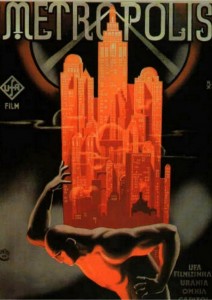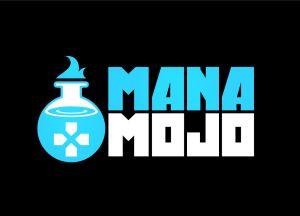 METROPOLIS
METROPOLIS
Released: 1927
Director: Fritz Lang
Written by: Thea von Harbou and Fritz Lang
Starring: Brigitte Helm, Alfred Abel, Gustav Fröhlich, Rudolf Klein-Rogge
First, a little background before we get to the review:
The history of the film print of Metropolis is a fascinating story in its own right. The original cut of the movie was 153 minutes long, but was edited down for release outside Germany. Some felt the movie’s original running time was too long, but the controversial themes of the movie also ensured that some edits were performed to alter or obscure the message of the original.
Over time, this constant re-editing saw much of the original footage lost, seemingly forever. In 1984, music producer Giorgio Moroder released an 80-minute version of the movie, adding a new (and entirely inappropriate) contemporary pop soundtrack. While unsatisfying, Moroder’s version did manage to bring the movie back into the public eye and fuelled the efforts of others to try and restore it to its original glory.
These efforts resulted in the release of a restored 124 minute version of the movie in 2001. This version restored the original orchestral soundtrack and used still shots and narrative captions to fill in the missing scenes. While far more satisfying than Moroder’s version, the movie still felt incomplete. It seemed like this would be the most fans would ever see of Lang’s visionary movie.
In 2008, however, a 16mm copy of the original film was discovered at the Museo del Cine in Argentina. This version was over 20 minutes longer than the 2001 release. In New Zealand, another print of the movie was found to contain 11 scenes missing from than the Argentinean version. These two prints were used to create the most complete version of the movie available.
This new version runs at 145 minutes, with narrative captions inserted to describe the missing 8 minutes of story. While still not complete, and with the new footage cropped from the original 35mm print, this restored version of the movie adds new subplots and increased tension and suspense in several key scenes.
WHAT YOU NEED TO KNOW
Metropolis, the city of the future, is a city of vast contrasts. Above, the privileged live a life of idle splendour, revelling in the decadence of the city. Below, the working class struggles in oppressive and potentially life-threatening conditions, running the machines that power the city.
From amongst the workers comes Maria, a teacher who preaches compassion and equality. She seeks a mediator, someone who can bridge the gap between those above and the workers below. When she brings some workers children to the world above, she catches the eye of Freder, son of Joh Fredersen, the leader of Metropolis. Freder descends into the depths of the city looking for her, only to discover the horrors of life below. Seeking to ease the burden of a worker, he becomes part of the underclass, experiencing for the first time the hardships they endure. He also hears Maria’s message and is swayed by her words.
Above, Freder’s father Joh learns of Maria and her teachings. Fearing that Maria’s message might spread amongst the workers and upset the balance of power in the city, he concocts a plan to discredit Maria by employing the mad scientist Rotwang to create a robot double of Maria, one that will alter Maria’s message of peace and mediation between the classes. Rotwang kidnaps Maria and unleashes the robot.
When the robot Maria rebels, it threatens to destroy the very foundations of Metropolis. Can Freder stop the robot before the city falls? Can he quell the rising unrest amongst the workers and become the mediator needed to bridge the gap between the classes?
WHAT I THOUGHT
The first thing that strikes the audience upon viewing Metropolis is the astonishing design of the city itself. A mix of German expressionism and art deco architectural sensibilities creates a visual feast for the viewer and establishes both the grandiose opulence of the city and the nightmarish horror of the machinery below that powers it. The contrasting environments is telling and establishes visually the thematic arguments that lie at the core of the narrative.
The work of Eugen Schufftan, the movie’s primary designer/effects expert, is one of the true highlights of Metropolis. From Rotwang’s laboratory and shrine to Hel to Fredersen’s Tower of Babel to the ominous great machines, the city of Metropolis is vividly brought to life by Schufftan. It was not until 2001: A Space Odyssey 40 years later that anyone would come close to realising a science fiction environment the way Schufftan did.
Lang’s direction and the cinematography of Karl Freund, Günther Rittau and Walter Ruttmann give life to Schufftan’s designs, adding to the visual feast and creating an atmospheric, grandiose vision of the future. The production design and cinematography compliment one another perfectly.
Unlike some modern blockbusters, the visual effects and production design work to enhance the story and character that lies at the heart of Metropolis. The city provides an important backdrop for a tale about class divide, the plight of the worker and the apathy of the elite. It is a reflection of the characters that inhabit it, and in turn shapes them.
These characters are in many ways archetypes that have helped shape modern science fiction storytelling: Joh Fredersen, the leader of Metropolis whose quest for power has blinded him to the suffering of the less fortunate; Freder, his son, revelling in the extravagance of bourgeois life until he experiences the plight of the poor workers and seeks to mediate between the workers and the elite; Maria, the pure and honest teacher preaching understanding and enlightenment between the classes; and Rotwang, the mad scientist creating new life to replace the loss of his wife and gain revenge on his enemies.
Freder provides our window into this world and serves as our guide through the wonders and horrors of Metropolis. While he is first drawn to the underworld by his infatuation with Maria, once he sees the conditions there, he is driven to save all he can. His efforts are small at first, even misguided, but his integrity and kindness are captivating and relatable. He struggles to come to terms with the reality behind the illusionary world he has inhabited all his life, and his journey from elitist to disillusionment to mediator is compelling.
Even the villains of the piece are layered and multi-dimensional. Joh Fredersen is not so much evil as he is arrogant, elitist and misguided in his belief that the workers exist purely to serve the privileged. Rotwang is more than just a mad scientist; he is a man driven to extremes by the loss of his wife Hel. He seeks a replacement for her and schemes against Joh, the man his wife left him to be with. While his plans are in many ways abhorrent, the emotions that guide him are very real and add a level of sympathy to the character.
Then there is the Maschinemensch, the robot created by Rotwang that replaces the human Maria and sows the seeds of rebellion amongst the workers. The robot Maria is a destructive force that rebels against her creator in true Frankenstein fashion. Her sadistic joy at the destruction around her extends even to her own eventual demise, gleefully laughing even as she is burned at the stake by the mob of workers who had formerly followed her. Another masterful piece of production design, this time by Walter Schulze-Mittendorff, the Maschinemensch is now a part of our popular culture, including influencing Ralph McQuarrie’s design for C3PO in Star Wars.
There are some elements of Metropolis that may not appeal to all audiences. The movie draws strongly on symbolism and metaphor to preach its message of unity and tolerance. Hallucinations, biblical stories and allegorical tales all play important roles in the story. At times, these elements can be a little heavy-handed, although most are so visually stunning that even their heavy-handedness isn’t intolerable.
As a silent movie, the acting is highly expressive and visual, sometimes coming across as over the top. This is a staple of the silent movie era, when the lack of sound meant that actors relied entirely on facial expressions and body language to convey emotions. For some modern audiences, this style of acting seems dated, even laughable, but it is merely reflective of its time and in no way detracts from the movie.
At its core, Metropolis is a story about the social divide between the elite and the working class. There are strong overtones of Marxist Socialism in its message, but inherent in that message is a belief in the equality of all men and the need for understanding that in some respects transcends even its overt political leanings.
Metropolis is a masterpieces of science fiction, a powerful visual experience that manages to amaze even 80 years after its release. It is arguably the greatest and most ambitious movie of the silent era.
Credit needs to be given not just to Lang but to the researchers and restorers who have ensured that we finally have a chance to see this masterpiece as it was originally envisioned by its creator.
5 Lukes.
THE NEW SEQUENCES
For those of you who have seen earlier cuts of Metropolis:
There’s a lot in this new edition: additional shots of the skyline, snippets of shots and moments added to existing scenes, the addition of new locations and characters missing from past versions. Several key scenes are longer and more dramatic, most notably the flooding of the worker’s city and the final confrontation between Rotwang and Freder.
Most importantly, the new release restores several key scenes and introduces subplots excised from earlier versions. These scenes include:
• The adventures of 11811, a worker who trades places with Freder, escapes into the world of the elite, and succumbs to the temptations this new world has to offer.
• The machinations of The Thin Man, Joh Fredersen’s hired spymaster,
• Maria’s incarceration at the hands of Rotwang and her subsequent escape.
• A more detailed explanation of the rivalry between Rotwang and Joh Fredersen.
Two key scenes remains missing, most notably a struggle between Rotwang and Joh Fredersen that enables the captured Maria to escape her imprisonment.
Despite the missing 8 minutes, this is the definitive version of Metropolis and should be seen by all sci-fi and cinema aficionados.
WHAT DID YOU THINK?
It’s clear that I’m a fan, but how about you? Have you had a chance to view the new cut? Do you feel its adding something extra to the movie, or am I just exaggerating? Let us know! Send in your thoughts to feedback@nerdculturepodcast.com, or leave a comment on this post. We would love to hear from you!








